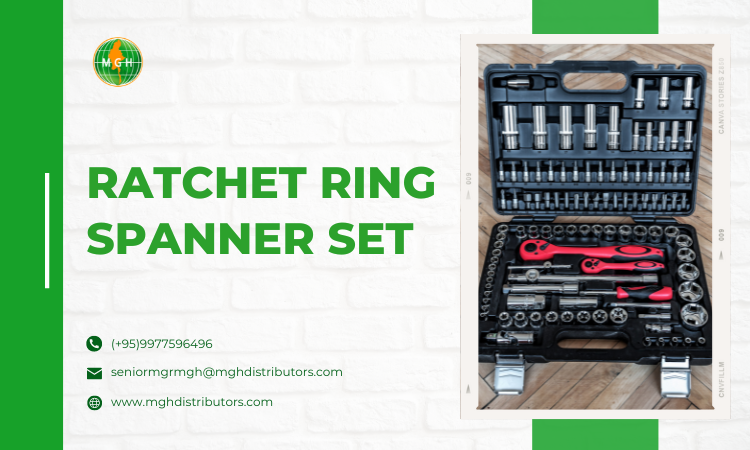Table of Contents
Introduction:
Feel like your toolbox is missing something? Have trouble with nuts and bolts that won’t move in tight spaces? With ratchet ring spanners, you can now get the most out of your tools. These tools are great for both professionals and DIYers because they can turn things like a wrench and are easy to use like a ratchet. Whether you need a full set of ratchet spanners or just one 13mm spanner to fix a problem, we’ll talk about why ratchet ring spanners are the best tool for any job in this (blog).
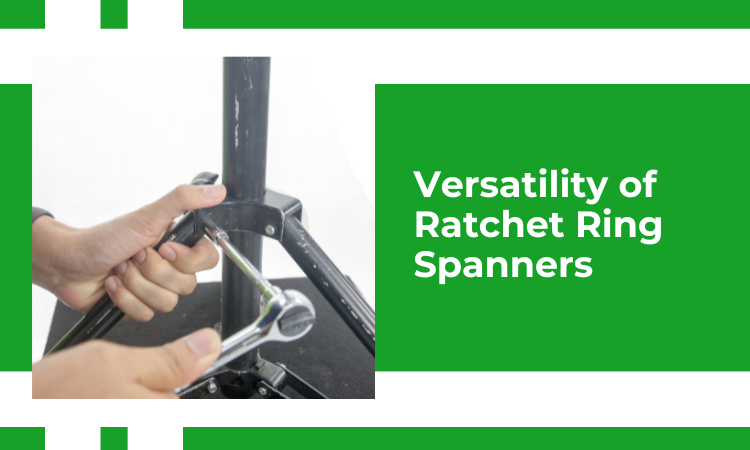
1. Beyond the Basic Wrench: Unveiling the Versatility of Ratchet Ring Spanners:
There are many more things that ratchet ring spanners can do than just tighten nuts and bolts. They may look like a natural step up from the trusty wrench. For more information on how these tools can be used in different ways, let’s dig deeper.
Being Able to Control Small Areas: Instead of taking the tool off fully after each turn like you would with a regular wrench, the ratcheting mechanism makes it easy to turn. Since they are small and don’t require a full swing, they are perfect for jobs that need to be done in tight or odd spaces.
Strong Dynamos for Double Duty: The closed-box end of many ratchet ring spanners are used to hold nuts, and the ring spanner end is used to tighten bolts. Having only one wrench is no longer necessary, which speeds up your job and makes your toolbox less cluttered.
Making the Right Choice: Ratchet ring spanners come in many sizes, so you can use them for a wide range of tasks, from small fixes on electronics that need tiny spanners to big jobs on cars that need bigger ones. Also, depending on your wants, you can pick between metric and SAE sets.
Multiple Uses: Ratchet ring spanners can be used for more than just screws. With their strong gripping power, they can be used for many things, like keeping pipes or fittings in place while connections are being made.
Better Dexterity: ratchet ring spanners are better for working in tight areas or with complicated parts because they are thinner than traditional wrenches.
You can Count on Durability: Clamp ring spanners are strong and long-lasting because they are made of high-quality steel. To make sure they last for years, make sure you take good care of them and keep them in good shape.
Investing in a set: You can get by with just one ratchet ring wrench, but buying a set gives you a lot more options. This means you’ll never be stuck looking for the right tool because you’ll have a range of sizes.
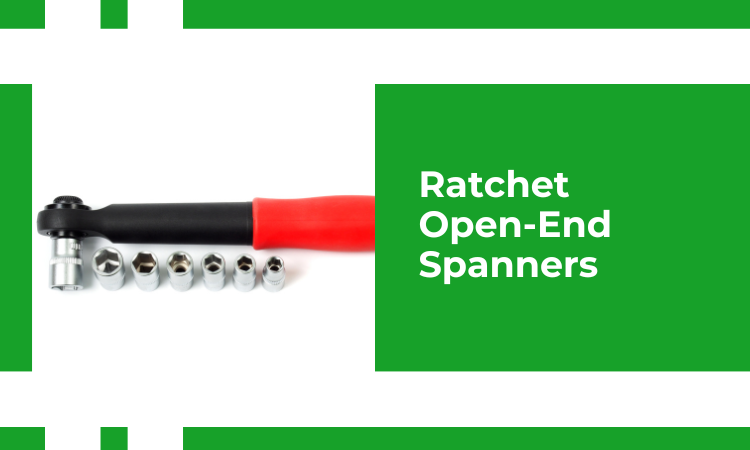
2. Tight Spots Solved: How Ratchet Open-End Spanners Conquer Awkward Angles:
There’s nothing more annoying than trying to remove a nut or bolt that won’t move from a tight spot. Most traditional tools need the arm to be fully extended, which makes them useless in these situations. Do not worry, though, because ratchet open-end spanners are very cleverly made to save the day!
The Secret Power of the Ratcheting Mechanism: The ratcheting system built into the handle makes this wrench stand out from the rest. This lets you turn the fastener in small steps without having to take the spanner off fully between turns. Think about how much more freedom of movement this gives you when you’re working in small spaces or behind big things!
Advantage of an Open-end: The ratchet open-end spanner has a closed box shape on one end that is great for firmly gripping nuts. The real hero in tight areas, though, is the head on the other side with the open end. This makes it possible to slip the spanner over the bolt at an angle, getting around things that would make a regular wrench useless.
Two Times as Many Functions: Ratchet open-end spanners can do a lot of different jobs. Not only can they work in odd angles, but they can also be used in a lot of different ways. The closed box end has enough gripping power for everyday jobs like tightening and loosening.
Size Does Matter: There are different sizes of ratchet open-end spanners, so you can use the right one for any space. You’ll have everything you need to deal with any awkwardly angled fastener, from small spanners for fixing delicate electronics to larger ones for working on cars in tight engine bays.
Invest in Efficiency: The next time you have to work in a small space, don’t waste time wrestling with heavy wrenches. You’ll find that ratchet open-end spanners are your new best friend. They will save you time and stress and make any job easier and faster.
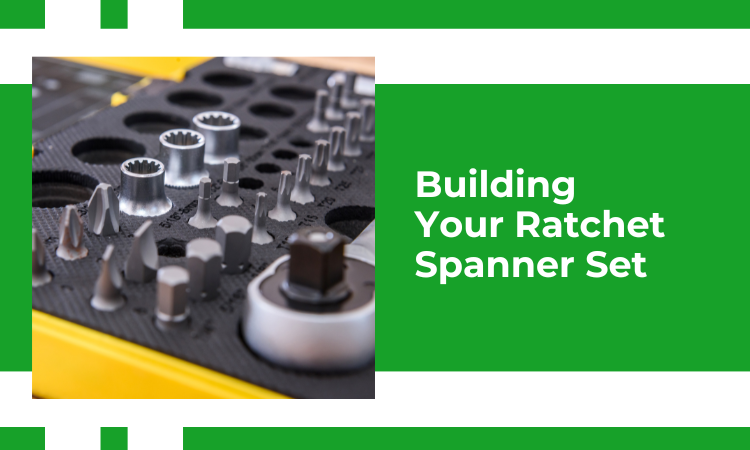
3. From DIY Projects to Pro Repairs: Building Your Essential Ratchet Spanner Set:
A well-stocked toolbox is necessary whether you’re a weekend warrior working on home improvements or a seasoned pro fixing things. A set of ratchet spanners is just what you need to get (nuts and bolts) off of things. Let’s look at how to put together the ratchet wrench set you’ll need for any job, from easy fixes around the house to complex work for a company.
How it works: Common sizes: Your set should be built around the sizes that you use most often. This usually comes with a variety of metric or SAE spanners, which will work with most of the screws you’ll come across. A good place to start is with 8mm, 10mm, 13mm, 17mm, and 19mm sizes.
Needs that are unique: Besides the standard sizes, think about the jobs and hobbies you want to do. When fixing cars, you might need bigger sizes for things like lug nuts or engine parts. On the other hand, a set of small locking spanners would be useful for working with delicate electronics.
Dual-Purpose Powerhouses: When you can, choose spanners with two ends. One end has a locked box that can hold nuts, and the other end has a ring spanner that can tighten bolts. This cuts down on the number of tools you need to carry, which speeds up your work and keeps your toolbox neat.
Mechanism for Ratcheting: How a ratchet wrench works is what makes it useful. Pick locking spanners that are of good quality and work reliably. This makes turning easy and keeps you from getting frustrated when working in small areas.
Things that matter: Buy spanners that are made of chrome vanadium steel, which is strong. The right mix of strength, flexibility, and corrosion resistance makes this material great for making sure your tools can handle even the hardest jobs.
Learning New Things: As you gain more knowledge, you may need more specialized spanners. You might want to get some gear wrenches or flex-head ratchets to help you with even tougher jobs.
4. Selecting the Perfect Set of Ratchet Spanners for Your Needs:
Ratchet spanners are useful and strong tools that everyone should have. But there are so many sets to choose from that it can be hard to figure out which one is best. Do not be afraid! You can find the right set for any job if you know what you need and keep a few important things in mind.
Size Does Matter: Finding the most popular fastener sizes is the first thing you need to do. METS or SAE? Small screws for electronics or big parts for cars? The size you choose will depend on the types of jobs you usually do. A set with a variety of common sizes is a good place to start because it lets you do most simple jobs.
Versatile or Specialized?: Would you rather be flexible or specialized? With double-ended spanners, you only need one set of tools. The closed box end can be used to hold nuts in place, and the ring end can be used to tighten bolts. For professional use, though, sets with spanners of each size might be better because they are lighter and take up less space.
Material Mastery: Ratchet spanners are strong, but they get broken easily. Choose sets made from chrome vanadium steel that is of high quality. The right mix of strength, flexibility, and corrosion resistance in this material means that your tools will last for years and be able to handle tough jobs.
Mechanism for Ratcheting: How a ratchet wrench works is what makes it useful. Pick a set that has a ratcheting motion that is smooth and works well. This makes turning easy, which is very helpful when working in small areas or doing the same thing over and over. Think about how many teeth are in the gear. More teeth mean that the gaps between turns are smaller, which gives you more control when doing delicate work.
More Than the Basics: Think about what you will need in the future. Some sets may come with extras like gear wrenches or flex-heads for better leverage when working at odd angles. These specific tools may not be necessary at first, but they can become very useful as your skills grow.
Thoughts on the Budget: Ratchet wrench sets cost different amounts based on things like quality, material, and the number of pieces they come with. Don’t spend too much at first. Pick a high-quality set that fits your price and focuses on its main functions. You can always use special tools to add to your collection later.
5. Metric vs. SAE - Choosing the Right System:
It looks like screws are easy to understand—they’re just nuts and bolts, right? But there are two main ways to measure things when you’re picking out a set of ratchet spanners: Metric and SAE. It is very important to know the difference and pick the right method for your needs.
Metric: The Fastener Language Used Around the World
Most of the world uses the (metric system), which is built on decimals of the meter. People like it because it’s simple and the sizes go up in a way that makes sense. You can usually find metric screws in:
1. Modern cars (except for some made in the U.S.)
2. Home tools and electronics
3. Imported furniture and machinery
4. Most DIY projects that need new hardware
SAE: An Established System
The SAE (Society of Automotive Engineers) system has been around longer. It is built on inches and bits of inches. It’s still common in:
1. Older cars made in the United States
2. (Hardware) for building and plumbing (though metric is becoming more common)
3. Furniture and tools that already use SAE screws
Choosing Your System:
That being said, which method should you pick for your ratchet spanners? Here’s how it works:
Do-It-Yourself fans: The safer choice is a metric set if you’re mostly working on jobs around the house and with newer hardware.
For auto mechanics: When working on different types of cars, it’s helpful to have both metric and SAE sets on hand.
People in jobs: It depends on your industry whether you have a dominant strategy. People who work in construction might prefer SAE units, while engineers might prefer metric units.
The Answer for Everyone:
Separate sets give you the most options, but some makers make sets that have both metric and SAE sizes. This can be a good middle ground for people who deal with different kinds of fasteners.
6. The Mighty 13mm: Unlocking the Power of a Single Ratchet Ring Spanner:
The 13mm ratchet ring tool is not as simple as it seems. Even though a full set of spanners is more flexible, this one hero can do an amazing number of things, showing that size isn’t always important.
The Size That Fits All:
A lot of popular nuts and bolts can be used with the 13mm size because it is just the right measurement. This golden size is needed for a huge range of jobs, from putting together furniture to messing around with electronics.
Small and Easy to Use:
A single wrench is beautiful because it is simple and easy to carry. You don’t need a big toolbox if you carry your 13mm friend with you in your pocket or a small tool bag. You can use it for quick repairs around the house or while you’re out and about.
A Powerhouse at Solving Problems:
Don’t let its size fool you. When it comes to usefulness, the 13mm ratchet ring spanner is the same as the bigger ones. The ratcheting system makes turning easy, even when there isn’t much room. The closed box end holds nuts firmly, and the ring spanner gives you leverage to tighten bolts.
A Way to Get into the World of Spanners:
Having just one 13mm wrench can help you get started with these useful tools. You can try out ratchet ring spanners and see how useful they are for yourself. If you need other sizes more often, you can buy a full set later with confidence.
A Choice That Fits Your Budget:
It is inexpensive to start with a single 13mm wrench when you want to get into the world of quality tools. This is a great choice for DIYers who don’t need a full set right away but want to try out how useful and easy ratchet ring spanners are.
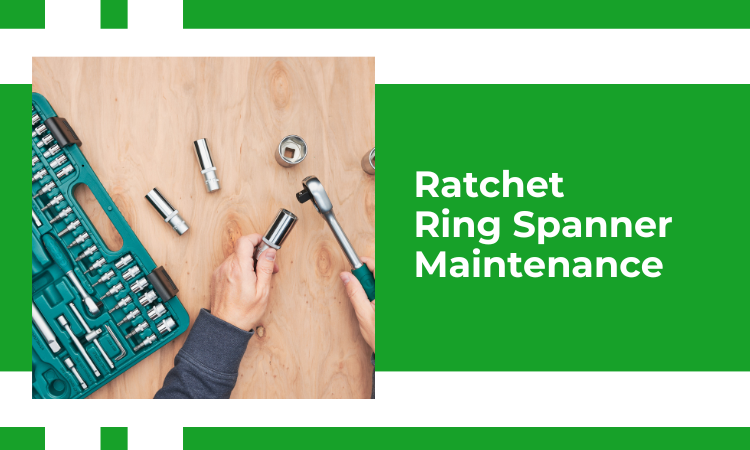
7. Ratchet Ring Spanner Maintenance: Keeping Your Tools in Top Shape:
The workhorses of your tools are your ratchet ring spanners. They make it easy to loosen and tighten nuts and bolts. But, just like with any hardworking tool, they need to be properly maintained to last as long as possible and work at their best. Maintaining your ratchet ring spanners is easy.
How to Clean: Use a clean, dry rag to wipe down your spanners after each use to get rid of dirt, grease, and other junk. This stops dirt from building up, which could make it hard to use and damage the finish. For tough dirt, use a light soap solution and a soft brush. Then, dry the surface completely.
Lubricate to make things smooth: Put a thin layer of grease on the moving parts of the ratchet device every so often. This lowers the friction, makes sure the ratcheting motion works smoothly and keeps damage to a minimum. Avoid using WD-40 as a lubricant for tools because it can attract dirt and wear down the system over time.
Smartly Store Them: Keep your spanners out of the way. Don’t ignore them. Get a strong toolbox or organizer with places for tools of different sizes. They won’t get broken, they won’t get lost in a crowded toolbox, and they’ll be easy to get to when you need them.
Look for Damage: Before you use your spanners, take a moment to look for any damage. Find locking mechanism cracks, chips, or bent teeth. Not only can these flaws make them less useful, but they can also be dangerous. It’s best to replace the gear if you find any damage. This will keep you safe and keep the tool from breaking down again.
Beyond Cleaning: Cleaning and greasing are important, but there are a few other things you should do as well. Do not use your spanners as pry bars; they are meant to be used for turning, not opening. Do not use too much force, as this can damage the system. To get things that won’t move, buy a set of pry bars.
8. Beyond Nuts & Bolts: Unexpected Uses for Your Ratchet Ring Spanner Set:
When it comes to nuts and bolts, ratchet ring spanners are the best tool. But they can be used for a lot more than just traditional fastening chores. With a little creativity, your trusty ratchet ring spanners can be used in a lot of different ways to solve problems.
Holding Power: There are other things that a closed-box end on a ratchet ring tool can grip besides nuts. Want to keep a pipe or part in place while you connect it? The spanner’s strong grip can save your life. This is helpful when fixing pipes or working with clamps and hoses.
Prying Power (Be Careful When Using It): However, a ratchet ring spanner should not be used for heavy-duty prying. It can be used for light prying chores in a pinch. The thin head of the spanner lets you reach into tight areas to gently pry open lids, free up parts that are stuck, or separate surfaces that are glued together. Remember to be careful and not use too much force so you don’t hurt the tool or the thing you’re trying to get at.
Advantage of Leverage: The handle of a ratchet ring spanner can be surprisingly useful in a number of scenarios. Need to use more force to open a lid that won’t open or tighten a clamp because your hands aren’t strong enough? The spanner can give you the extra push you need because it gives you lift.
Shaping & Bending: Using the flat surface of a ratchet ring spanner head to shape or bend soft metals like copper or aluminum might sound strange, but it can be used for these chores. This can help you change the shape of thin sheet metal or adjust fittings for certain uses. Just make sure the metal isn’t too hard so the tool doesn’t get damaged.
Scratching and Cleaning: You can use the flat tip of a spanner head to clean or scratch things. Paint or dirt that won’t come off a flat surface? With care, the edge of the tool can scrape it off without hurting the material underneath. Just keep in mind how hard the material is; this method only works on areas that are softer than the spanner.
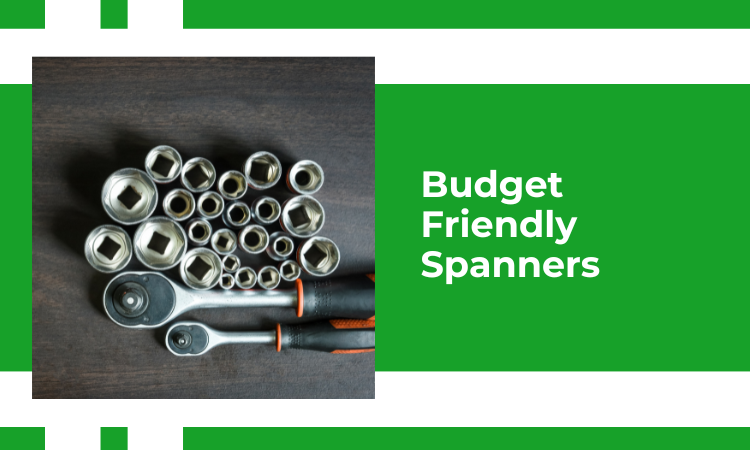
9. Budget-Friendly Spanners: Creating a Top-Quality Set on a Budget:
It can be pricey to build a well-equipped toolbox, but DIY fans don’t worry! You don’t have to spend a lot of money to make a great set of ratchet ring spanners. How to be a smart buyer and put together a set that won’t break the bank:
Start with the Essentials: Pay attention to the most popular sizes. There are usually a number of common sizes of metric or SAE spanners in this, such as 8mm, 10mm, 13mm, 17mm, and 19mm. If you have these core sizes, you should be able to do most simple repairs and do-it-yourself projects.
Put Quality First: Don’t completely skimp on quality just because you want to save money. Choose spanners that are made of chrome vanadium steel. This substance has a good mix of power, flexibility, and resistance to corrosion. If the spanners aren’t made well, they might break quickly and cost more to replace over time.
Take a look at Starter Sets: There are a lot of companies that make starter sets with a range of widely used sizes that are less expensive. One great way to start is with one of these sets. You can add to your collection over time as your needs change.
Look for Deals and Discounts: Keep an eye out for sales and discounts at hardware shops and online. During sales or the holidays, many shops offer discounts on tool sets.
Dual-Purpose Powerhouses: Pick spanners with two ends whenever you can. These have a closed-box end for holding nuts and a ring spanner on the other end for tightening bolts. This cuts down on the number of tools you need and the cost of them all.
Put Functionality Ahead of Fancy Features: There’s no need for a set with all the bells and whistles. Don’t bother with fancy storage cases or functions that you might not use often. Pay attention to basic features like a smooth ratcheting system and a strong build.
Don’t just look for Big Brands: Even though well-known names are thought to be good, you might want to look into manufacturers that aren’t as well-known. There are probably secret gems out there that are well-made and cost less. Find the best deal for your money by reading reviews online and comparing features.
Think of Long-term: It costs money to build a good set of spanners. As your projects and skills get better, you can slowly add more specialized spanners or gear wrenches to your collection.
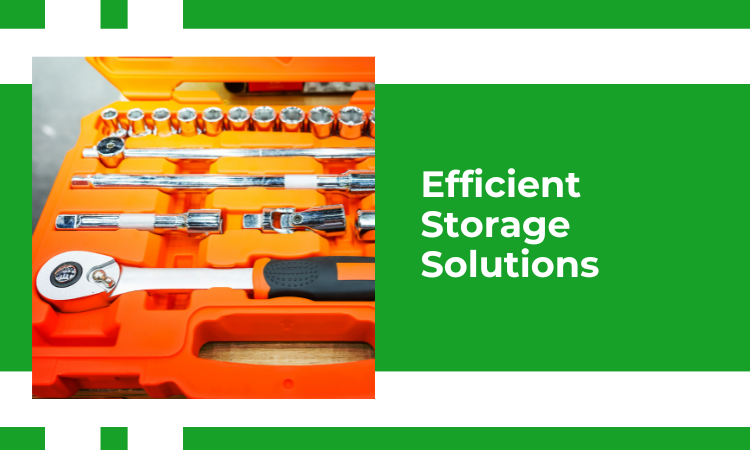
10. Level Up Your Toolbox: Efficient Storage Solutions for Ratchet Spanners:
For people who like to do their own projects, a well-organized kit is a work of art. But it can be hard to keep your beloved set of ratchet spanners in order. To improve the organization of your tools and make sure your spanners are always easy to get to, try these ideas:
The Classic Toolbox Tray: A divided toolbox tray is a simple option that works well. You can then sort your spanners by size, keeping them nicely separated and stopping them from rattling around. Choose a tray made of metal or plastic that will last so that it can hold your tools.
Magnetic Tool Bars: Putting magnetic toolbars on the inside of the lid of your toolbox saves room. These things make your spanners easy to see and get to, so you can quickly grab the right size. This choice is especially helpful for spanners that you use a lot.
Pegboard Panels: Pegboard panels with hooks for each size of the spanner make storing easier to see and keep organized. This lets you quickly see your whole collection and find any pieces that are missing. You can change the way pegboard panels look and work to fit your needs and the room you have.
Slide-Out Tool Chests with Drawers: A rolling tool chest with separate drawers for different-sized spanners is perfect for people with bigger collections or who like to keep things as organized as possible. This helps you keep your tools safe, separate, and easy to get to, especially if you have more than just spanners.
Wall-Mounted Tool Organizers: Mounted on the wall, these organizers free up space in your toolbox that you can use for other things. These come in different shapes and sizes and have hooks, holes, and shelves that are made to hold different kinds of tools, like ratchet spanners.
Labeling is a Must: Labeling is very important no matter what kind of storage you use. Put signs on your trays, drawers, or pegboard hooks that are clear and will last for a long time to make it easy to find each spanner size. This keeps your toolbox neat and saves you time that you would have spent looking for the right tool.
Clean Up Often: As your collection of tools grows, you should regularly get rid of the extras. Getting rid of extra spanners, broken or useless tools, and sets you don’t need is important. Making this change will free up space in your toolbox and keep it running smoothly.
Conclusion:
Invest in a quality set of ratchet ring spanners, and watch your toolbox transform. These versatile tools will tackle any project, from furniture assembly to car repairs. With their space-saving design and efficient functionality, ratchet ring spanners are sure to become your new favorite companions. So, don’t let stubborn nuts and bolts hold you back! Unlock your toolbox potential and experience the power and ease of using ratchet ring spanners.


